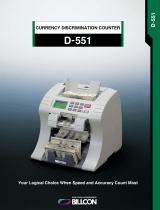
-- 8 --
cmx0ade1
TECHNICAL DESCRIPTION, MEH 44B
Contact XP01 (plug) provides the power supply and signal connection between the power
unit and the feed unit.
S Pins A and B carry the 42V power supply.
S Pin F is the control connection for the contactor in the power unit.
S Pins R and S are the tachometer connections to the power unit. This signal is used if
the power unit incorporates a wire feed speed display.
S Pins J and L carry a reference voltage signal from the power unit to two potentiometers:
one for welding voltage control (RP02, optional), and one for the voltage control
potentiometer on the remote control unit. See a lso the circuit diagram on page 13.
S Pin K carries the voltage reference signal to the power unit.
RP01, is a potentiometer (2.5kτ 2W), fitted to the front of the unit, for controlling the wire
feed speed.
Optional potentiometer RP02 (2.5kτ 2W), fitted to the front panel, controls the welding
voltage.
SA1 is a changeover switch for selecting control of welding voltage from either RP02 or
from the remote control unit. (Control from RP02 is an optional feature.)
Before either the remote control unit potentiometer or RP02 can be used to control the
welding voltage, it is necessary to change over connections in the power unit in order to
disengage its potentiometer.
M01 and M02 are two 12V motors connected in series. M01 is built together with
tachogenerator G01.
C01 is a 0.1←F 125V AC capacitor. Resistors R01, R02and R03limit the motor starting
current. (R01 = 0.3τ 50W, R02 = 0.5τ 50W, R03 = 0.75τ 50W.)
Resistor R01 and diode V01(MR 754) limit the motor braking current.
From serial no. 127-- xxx--xxxx the current limit function is integrated in the circuit board.
This gives as a result, that the old version of circuit board (part no. 0481 703 880) can not
be used as a spare part in the new versions of MEH.
When using a new circuit board (part no. 0481 911 880) as a spare part in an old wire
feeder, the components R01, R02, R03 and V01 should be removed and wire 027 has to be
connected to wire 018.
The current relay provides a signal to the circuit board when welding current is flowing.
If the creep start mode has been selected, wire feed speed will be increased from creep
speed to the set speed when the current relay operates. The relay is mounted adjacent to
the welding current cable terminal.
XS01 (the 12 pole socket connector) is the connector for the remote control unit. Sockets A,
B and C are for the wire feed speed control circuit, while sockets F, G and H are in the
welding voltage control circuit.
YV1 is the solenoid valve for shielding gas control.





















